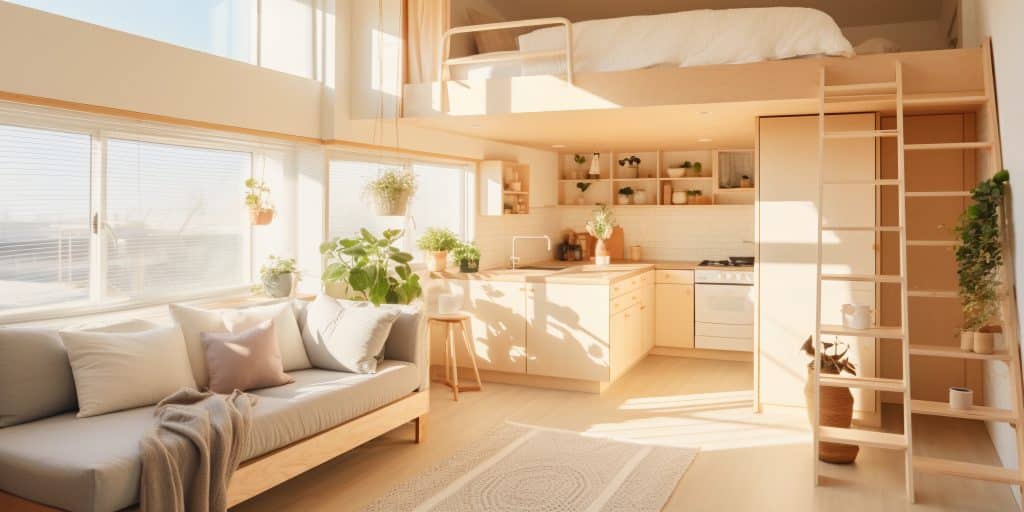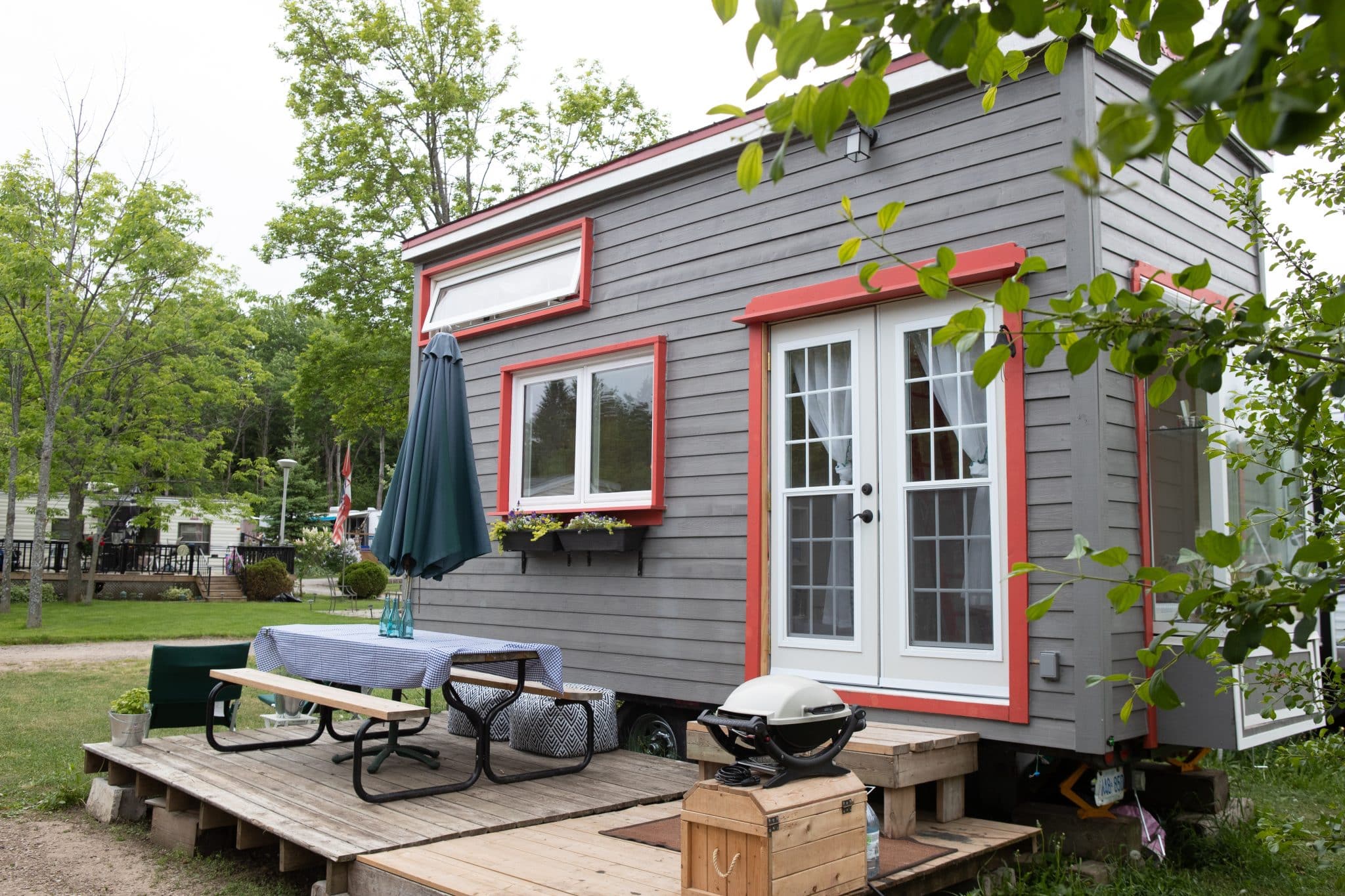Embracing The Tiny Living Movement: Benefits And Considerations
Do you ever feel stifled by the weight of your possessions? Does the ever-rising cost of living leave you gasping for air? You may dream of a life less tangled by square footage, where experiences trump material belongings. If so, the tiny living movement might hold a compelling answer.
For many, welcoming the idea of a home on a smaller scale isn’t just about shrinking their address; it’s about reclaiming control. It’s taking back time, energy, and resources that often get swallowed by conventional demands. It’s a conscious decision that warrants careful deliberation before taking the plunge into a loft bed paradise.
Before auctioning off your prized belongings and trading your expansive lawn for potted rosemary, look at the tangible advantages and practical challenges of living in limited square footage. This blog post will examine the financial benefits, the environmental impact, and the unexpected joys of minimizing your footprint. It will also acknowledge the logistical challenges, social reflections, and lifestyle adjustments accompanying this intentional shift. Once you’re ready for the change, check the portfolio of TinyList or a similar contractor specializing in this project.
Benefits Of Tiny Living

Downsizing your residence might seem radical, but the benefits extend beyond cost savings. Here are some of them:
Financial:
- Simplified budget – Lower purchase prices, rent, and property taxes free up financial resources for enriching activities passions, and building financial security.
- Reduced utilities – With less area to heat, cool, and illuminate, energy bills dwindle, leaving more in your pocket each month.
- Debt-free potential – The affordability of a small-scale way of life makes achieving financial independence a more attainable goal, allowing you to breathe easier and live life on your terms.
Environmental:
- Reduced carbon footprint -Less construction material and a minimal living impact translate to a gentler environmental presence.
- Waste minimization: Surviving with less encourages mindful consumption and reduces waste generation in terms of packaging and unnecessary belongings.
- Potential for self-sufficiency – Many mini homes incorporate composting toilets, rooftop gardens, and rainwater harvesting, promoting a more sustainable way of life.
Suppose you seek a simpler life that benefits your finances and the planet. In that case, a pocket-size set-up might be the key to unlocking a future filled with freedom, mindfulness, and a reduced environmental impact. Tiny homes Australia or in your location are prime examples of such, and many families are now reaping the benefits.
Considerations For Tiny Living
Embracing a mini-mansion might seem like a dream come true. Still, before diving headfirst into a world of bunk beds and pocket-sized kitchens, it’s crucial to acknowledge the realities of residing in limited square footage. Here are some critical aspects of your scaled-down journey:
Space limitations:
- Downsizing and minimalism – Minimalism requires ruthless editing of your things. Prepare to embrace this mindset and learn to love multi-functional furniture and creative storage solutions.
- Adapting daily routines – Cooking, cleaning, and entertaining take on a new meaning in a small house. Be prepared to adjust your routines and embrace innovative approaches to everyday tasks.
- Feeling cramped or claustrophobic – Not everyone thrives in close quarters. Consider trying out a pocket-sized house experience to gauge your and your family’s comfort level.
Legality and regulations:
- Zoning laws and building codes – Small homes may not have universal acceptance. Research local regulations and zoning laws to ensure legal hurdles don’t meet your dream house.
- Permits and licenses – Building or parking a pocket home often requires permits and licenses. Factor in the time and cost involved in acquiring these approvals.
- Utilities and waste disposal – Access to utilities and waste disposal options can vary depending on location. Explore alternatives like composting toilets, solar panels, and rainwater harvesting.
Relationships and social life:
- Hosting and entertaining – Hosting guests in a minuscule area poses its hurdles. Be prepared to get creative with seating arrangements and consider alternative venues for larger gatherings.
- Residing in close quarters – Sharing a small house with family or partners can intensify positive and negative emotions. Open communication and clear boundaries are essential.
- Finding activities and hobbies: Adjusting to your social life and outdoor activities might be necessary. Think creatively about parks, community hubs, and hobbies that don’t require extensive room.
Lifestyle adjustments:
- Flexibility and adaptability: Be prepared to adjust your expectations and embrace a flexible mindset. Scaled-down arrangements require resourcefulness, problem-solving skills, and an ability to adapt to different situations.
- Prioritizing experiences – Residing in a smaller area frees up resources for focusing on meaningful activities and relationships. Embrace outdoor adventures, community activities, and meaningful connections over material articles.
While these characteristics might seem daunting, they serve as a valuable roadmap for navigating the realities of a minimalist lifestyle. By acknowledging potential issues and preparing for adjustments, you can approach this transformative experience with informed enthusiasm and pave the way for a fulfilling life within your cozy confines.
Tiny Living, Is It Right for You?
The appeal of small-scale arrangements is undeniable. Downsized expenses, environmental benefits, and a minimalist, experience-rich way of life offer a compelling melody. However, before diving impulsively, careful introspection is required. Is a pocket-sized home a harmonious fit for your life or a discordant mismatch waiting to disrupt your current rhythm?
Answer these questions truthfully:
- Are you comfortable decluttering belongings and changing to a more streamlined lifestyle, or do you find joy in the abundance of your current living arrangements?
- Can you readily adjust routines and embrace unexpected challenges in a confined room, or do you require rigid structure and ample personal expanse to thrive?
- Are you confident in maintaining strong, healthy relationships within close quarters, or does sharing a small area amplify potential friction and tension?
- Do you find fulfilment in prioritizing outdoor adventures, community connections, and meaningful encounters over material things, or do you derive satisfaction from a larger living area and its accompanying amenities?
Before taking hold of this arrangement, consider your comfort with minimalism, adaptability, close-quarters relationships, and prioritizing experiences over spaciousness to assess your compatibility.
Final Thoughts
Choosing compact living signifies a transformative decision, not a whimsical leap. Before stepping onto this path, conduct a thoughtful self-assessment. Scrutinize your comfort with modest living, adaptability within limited space, and the potential impact on relationships. Align your values with the essence of a simple home – prioritizing passion over possessions and resourcefulness over abundance. Only through such discernment can you gauge whether this compact lifestyle resonates with your aspirations. Make a wise choice and shape a harmonious living arrangement, whether a miniature masterpiece or a sprawling canvas.







